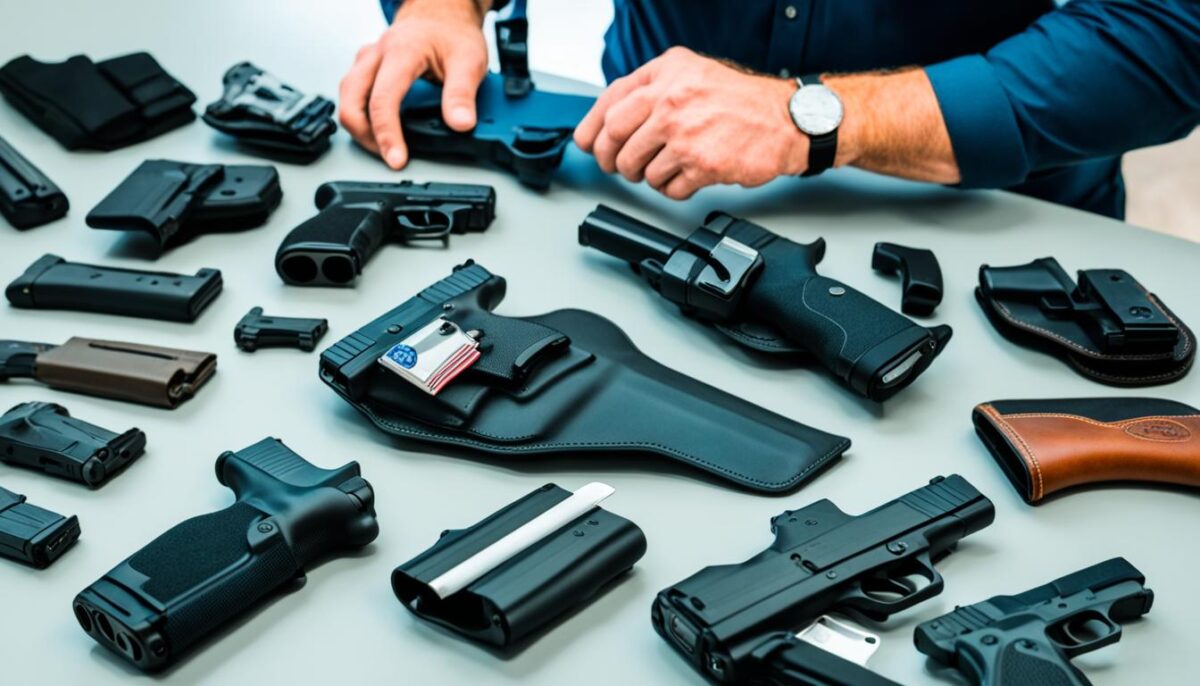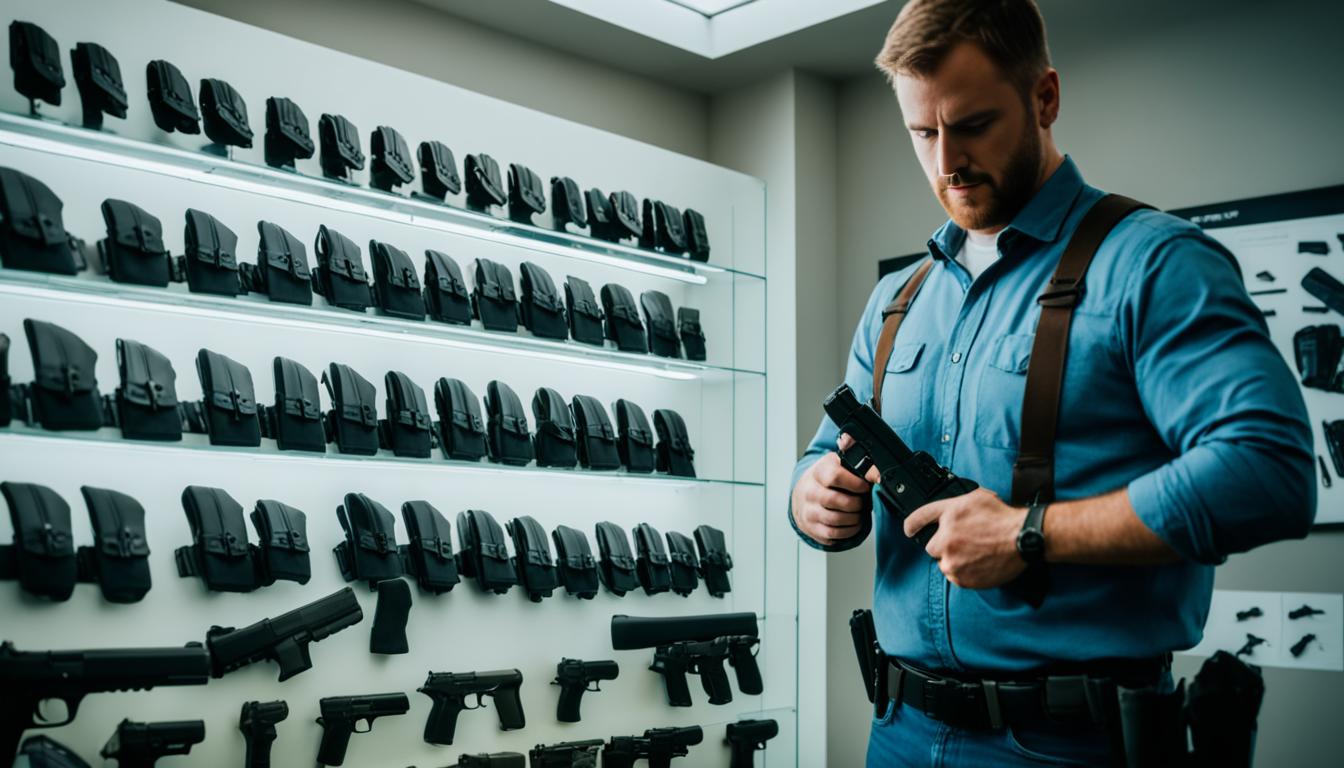Welcome to our guide on holster selection! When it comes to carrying your firearm, comfort and quick access are key. With so many options available, making an informed choice can seem overwhelming. But fear not! We’re here to provide expert tips and guidance to help you find the perfect holster that meets your needs.
First and foremost, let’s talk about comfort. A holster should feel like an extension of your body, allowing you to move freely and comfortably throughout the day. Whether you prefer inside-the-waistband, outside-the-waistband, or shoulder holsters, finding one that offers optimal comfort is crucial. By considering factors such as the material, padding, and adjustable straps, you can ensure a snug and comfortable fit that you can rely on.
Next, let’s address the importance of quick access. In a self-defense situation, every second counts. A well-designed holster should allow for a smooth and efficient draw, ensuring you can reach your firearm easily when it matters most. Look for features such as adjustable retention levels and intuitive release mechanisms to enhance your draw speed and overall safety.
By making an informed choice when selecting a holster, you can have peace of mind knowing that you’ve chosen a reliable and functional option that suits your lifestyle. In the upcoming sections, we will delve into the factors to consider and provide guidance on finding the right fit. So, stay tuned for more valuable insights!
Factors to Consider
When it comes to holster selection, there are several important factors that you should consider. By taking these factors into account, you can ensure that you choose a holster that is well-suited to your needs and preferences.
Type of Firearm
The type of firearm you own plays a crucial role in determining the right holster for you. Different holsters are designed to accommodate specific types of firearms, such as handguns, pistols, or revolvers. It’s important to choose a holster that is compatible with your firearm to ensure a secure and proper fit.
Preferred Carrying Method
Another factor to consider is your preferred method of carrying your firearm. Are you planning to carry it openly on your hip, or do you prefer a concealed carry option? The answer to this question will help you narrow down the type and style of holster that will best meet your needs.
Material and Retention Options
The material and retention options of a holster can greatly impact your comfort and the security of your firearm. Holsters are often made from materials such as leather, kydex, or nylon, each with its own advantages and disadvantages. Additionally, different retention mechanisms, such as thumb breaks or adjustable tension screws, can provide varying levels of firearm retention. Consider the material and retention options that align with your preferences and priorities.
Daily Activities
Your daily activities should also be taken into consideration when selecting a holster. Are you primarily engaged in sedentary office work or do you lead an active lifestyle that involves physical movement and exercise? Certain holsters may be better suited for specific activities, ensuring that your firearm stays securely in place even during dynamic movements.
By considering these factors – the type of firearm you have, your preferred carrying method, material and retention options, and your daily activities – you can make a well-informed choice when selecting a holster. Taking the time to evaluate these factors will help optimize your holster selection for comfort, easy access, and overall satisfaction.

Finding the Right Fit
Now that you’ve considered the important factors for your holster selection, it’s time to find the right fit. A well-fitted holster ensures optimal comfort and functionality, allowing you to carry your firearm confidently and conveniently. Here are some expert tips to help you find the perfect fit:
Adjusting Retention Level
One crucial aspect of a proper holster fit is the retention level. It’s essential to adjust the retention screws or straps according to your preference. This ensures that your firearm stays securely in place without being too tight or too loose, striking the right balance between accessibility and firearm retention.
Testing for Comfort and Concealment
Another key consideration is the comfort and concealment of your chosen holster. It’s recommended to try different holsters and wearing positions to find the one that feels comfortable against your body while providing effective concealment. It should allow you to move freely without causing discomfort or printing, ensuring your firearm remains discreetly concealed throughout the day.
Compatibility with Body Type and Clothing Choices
When selecting a holster, it’s crucial to take your body type and clothing choices into account. Certain holsters, such as appendix carry or shoulder holsters, may be more suitable for specific body types. Additionally, consider the clothing styles you commonly wear and ensure that the holster is compatible with them, providing a seamless and discreet fit.
By following these guidelines, you can fine-tune your holster selection and find the right fit that meets both your functional needs and personal comfort. Remember, investing time in finding the perfect holster is essential for a safe, comfortable, and confident concealed carry experience.

